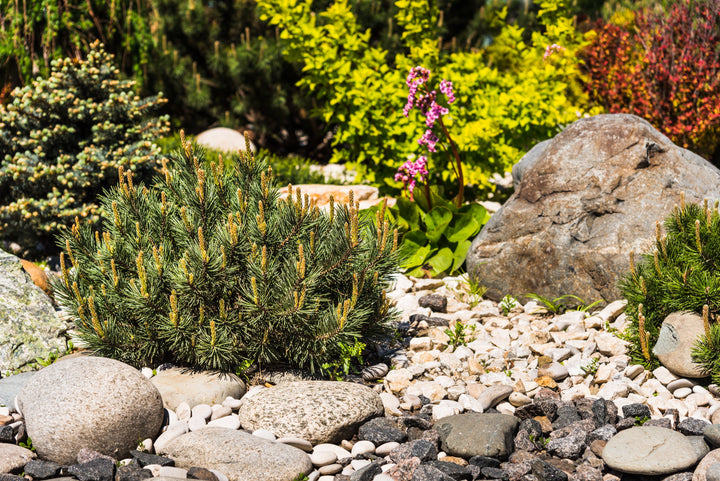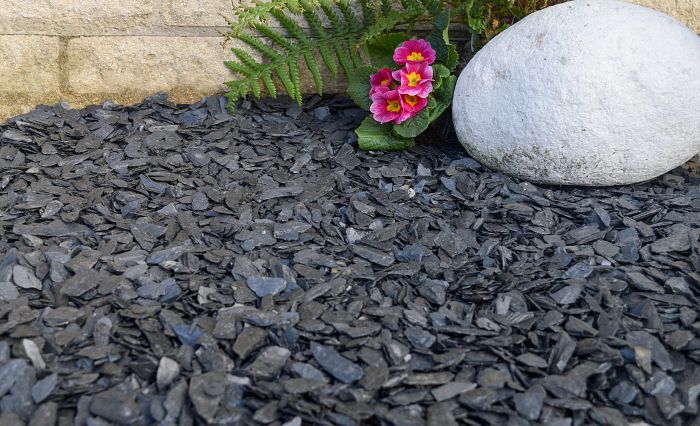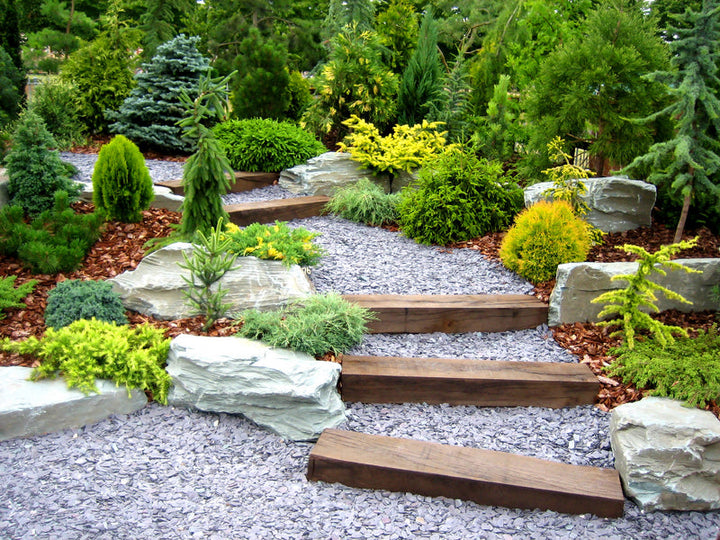A complete guide to decorative glass chippings
Decorative glass chippings are becoming increasingly popular in modern landscaping, offering an alternative to traditional garden materials. So, whether you're planning a garden renovation or simply looking to freshen up an existing feature or path, this guide explains everything you need to know about selecting, using, and maintaining glass chippings in an outdoor space.
What are glass chippings?
Decorative glass chippings are processed recycled glass aggregates created through a specialised manufacturing process. The glass is heated until molten, infused with colour pigments, cooled, and then crushed into uniform sizes. Unlike regular broken glass, these chippings undergo a tumbling process that eliminates sharp edges, making them completely safe for use.
What are the benefits of decorative glass chippings?
One of the best things about glass chippings is how well they last. These colourful pieces keep their vibrancy year after year with very little upkeep needed. You won't need to top them up annually like you would with bark or organic mulch and they weather well in the British climate.
Many gardeners are surprised by how versatile glass chippings can be. They come in a range of colours - from subtle blacks and rose golds to aquamarine blues and emerald greens. This variety means you can create striking contrasts in your garden design, especially when you pair them with white stones, slate chippings or light-coloured paving.
When it comes to weed control, glass chippings are incredibly practical. Their dense coverage and substantial weight create an effective barrier that blocks sunlight from reaching weed seeds, while also making it difficult for airborne seeds to take root. For the best weed prevention, we recommend laying a permeable landscape weed prevention membrane underneath and applying the chippings at a depth of at least 2 inches. They'll stay firmly in place during heavy rain, making them a low-maintenance choice for keeping your garden beds weed-free.
Are glass chippings safe?
A common question we hear is about safety. Rest assured - thanks to that tumbling process we mentioned earlier, these chippings have no sharp edges and are completely safe to walk on.
Creative ways to use glass chippings
Wondering where to use glass chippings in your garden? The possibilities are more varied than you might think.
- Many gardeners start with plant beds, where the chippings add colour while keeping maintenance low. However, they can also work brilliantly around water features. When the sunlight catches both the water and the glass, this can create beautiful reflections throughout the day, adding that extra sparkle to your garden’s main focal point.
- Glass chippings are also commonly used to decorate and personalise grave sites, where they provide a lasting, low-maintenance alternative to flowers while adding a touch of colour and shimmer that can make the memorial space feel more special. Many people choose colours that hold significance for their loved one.
- Glass chippings can also be used indoors, on a smaller scale. Transform houseplant displays and terrariums, adding a contemporary touch that traditional materials just can't match. They're particularly effective in bright spaces where the light can really bring out their colour.
How to install glass chippings
Getting started with glass chippings is straightforward, but there are a few tips worth knowing to get the best results when it comes to installation. First up, measure your area carefully - this helps you to order the right amount and avoid running short halfway through the job. Want to make life easier? Clear away any old mulch or debris first, and consider putting down landscape weed prevention membrane to keep everything looking neat for longer.
When you're ready to lay the chippings, aim for a depth of about 5-8cm. This depth gives you the best coverage and helps keep weeds at bay. After spreading them evenly with a rake, give them a light water to wash off any dust. You'll be amazed at how this simple step brings out their true colour.
How to maintain glass chippings
Looking after your glass chippings couldn't be simpler. A quick rake now and then keeps them looking fresh, and the occasional rinse with water brings back their shine.
Choosing your colours
Not sure which colour to go for? Think about the overall look you're trying to achieve. For modern gardens, black and opaque chippings create a sleek, contemporary feel. If you're working with water features, blues and turquoise varieties can make it seem like the water extends into the surrounding area.
For traditional gardens, you might be surprised how well lilac chippings work - they add a subtle touch of colour without overwhelming the natural feel of the space. Want to make your plants stand out? Green chippings create a seamless base that lets your flowers take centre stage.
How we can help
Here at Decorative Aggregates, we offer glass chippings in a 10-14mm size that works well for most garden projects. Each 20kg bag gives you plenty of coverage (specific coverage depends on how deep you lay them), and they're completely safe for use around plants and in water features.
Looking for inspiration? Our customers have found countless creative ways to use these versatile glass chippings - from creating stunning pathways and modern rockeries to designing eye-catching container gardens and memorial spaces. We love seeing how each project brings its own unique character to these shimmering materials.
Want to see how they look? Samples are available on request and you can also view the full range of glass chippings here. We offer the widest range of gravels and aggregates and our friendly team is always available to give advice. Get in touch today!


